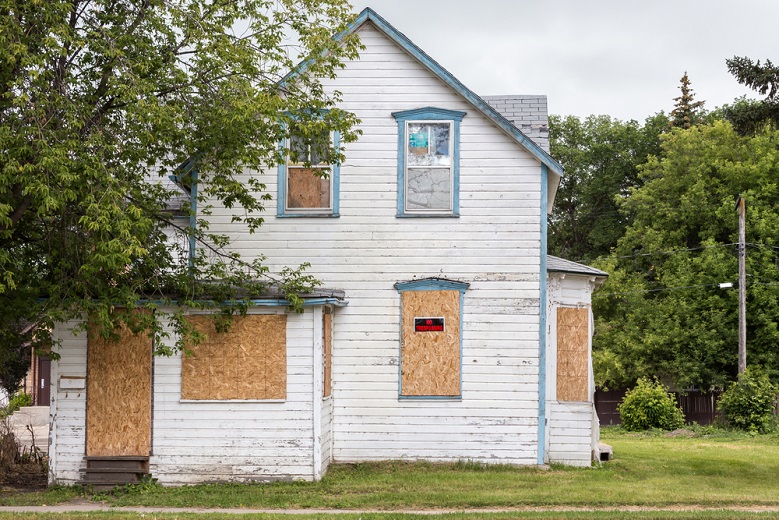
By Ethan Roberts
Home flipping is the practice of buying a home in distress, such as a foreclosure, estate sale, or short sale, repairing and improving its features, and then re-selling it for a quick, profitable sale. And as its popularity has grown, so have the number of television reality shows that claim to show you how to do it. Today I’d like to take a look at the “reality” portrayed in these shows.
Programs Encouraged Flippers During the Boom
About 10 years ago, when the real estate market was nearing its peak, many new investors became interested in home flipping largely because of television shows such as “Flip This House,” “Flip That House,” and others that showed ordinary people buying, fixing up, and quickly selling homes, ostensibly for big profits.
In fact, the success of those early shows inspired so many neophyte flippers that within a few years, it became difficult for long-time investors to find and acquire foreclosures, because the increased demand led to higher prices, making profitable flipping nearly impossible. In short, the huge success of home flipping led to its downfall for several years!
But from 2008–2011, home flipping became more difficult as values declined, and many of the early home-flipping shows disappeared. They were replaced by shows about landlords, reflecting the increased demand for rentals from the thousands of people who lost their homes to foreclosure during the crisis.
Home-Flipping Shows Post-Crisis
Fast-forward 10 years. We’ve been through the real estate market crash and now we’re well into a recovery cycle. And as real estate prices have stabilized and then ascended again, TV has spawned new home-flipping shows like “Flipping Las Vegas.” To become more entertaining, these shows add a degree of drama to the reality mix without a whole lot of regard for the financial facts.
The problem with many of these shows is that while they may accurately show the problems the flippers encountered during rehabbing, they leave out important financial aspects of the sale that affect the bottom line—all in an effort to juice the ratings. At the end of each episode, they tell you what the investors initially paid, how much they spent on repairs, and the price for which it sold. The bottom line is always a big fat profit.
One controversial episode of “Flipping Las Vegas” began by stating that the purchase price of the home was $225,000, the cost of the rehab would be $20,000, and the likely sale price was $305,000. The projected profit, according to the flippers, was $60,000. By the end of the show, after an extensive rehab, they projected an even much larger profit. Sounds great, but what were they leaving out? A lot.
Home Flipping in The Real World
Here’s how it works in the real world. When I flip a house, there are always several other costs besides repairs. Here are just a few of them.
Insurance. First I have to purchase vacant-property insurance, which is much more expensive than rental-dwelling policies because of the increased risks inherent with a vacant house.
Utilities and maintenance costs. In addition, electric and water utility costs can add up over several months. Sometimes there are also maintenance costs, such as keeping the lawn mowed and edged, unless you do it yourself.
Taxes. On the day you close on the sale of the home, you will have to pay real estate taxes, with the amount prorated from the day you bought until the day you sold that home.
Commissions. The biggest costs in a real estate transaction are the real estate commissions and closing costs. Unless, like myself, you’re a licensed real estate agent, you can expect to pay anywhere from 4.5% to 6% of the sales price in commissions when you sell. So given that $305,000 sales price, a 6% commission would be $18,300! But the television program never mentioned that.
Closing costs. Closing costs on the buying end of a cash deal are usually small, but on the selling end, you can expect to pay about 2% of the sales price, and more if the buyers need you to pick up some of their costs. That 2% of the $305,000 sales price would add up to an additional $6,100!
So, as you can see, that projected $60,000 profit could easily melt down to $35,600 after commissions and closing costs. From that amount, subtract the taxes, insurance, maintenance, and utilities, and the net would probably be closer to $30,000. That’s only half the projected profit that the show would lead you to believe you’d see.
Unexpected expenses. Now, $30,000 profit in a few months is still a pretty good return, but that’s assuming all the repair estimates are accurate, and that no other unexpected expenses arise during the rehabbing process.
I have never rehabbed a house that didn’t have at least one or two nasty and expensive surprises. When it comes to neglected foreclosures, there’s always the possibility of running into unforeseen problems such as termites, water damage and/or mold, or defective wiring or plumbing.
Losses from theft. Another expense rarely mentioned on the home flipping programs comes from theft. I have known several investors who’ve had thieves break into their vacant properties and steal flooring materials, tools, a pressure washer, and even an air conditioning system. Since you never know if or when this might happen, it’s not something you would ordinarily put in your profit projections. But it does occur.
In fairness, I should say that there was one show, called “Property Ladder” that did actually show first-time home flippers running into various problems that threatened not only their profits, but the entire project. If anything could go wrong with a home flip, it did on that show, from bad contractors to budget meltdowns to spouse and partner fights.
In closing, while these shows are very entertaining, they don’t always show all of the issues you might encounter when flipping a home. Even on a successful project, I still run into problems with service providers not showing up, stores losing orders, delayed materials, bad weather, unexpected repairs, and a host of other issues.
However, I don’t want to discourage anyone from flipping homes. If you go into it armed with knowledge and with your eyes open, it can be a fun and rewarding way to generate income. For comprehensive information on how to flip a home successfully, check out some of my previous posts, such as “How to Properly Estimate Repair Costs on a Flip” and “5 Properties to Avoid when Flipping a Home.” Then watch the shows for fun!

Ethan Roberts is a real estate writer, editor and investor. He’s a frequent contributor to InvestorPlace, and his work has been featured on MSN Money and Reuters. He’s also written for Seeking Alpha, Investopedia, The Fiscal Times, ForSaleByOwner and Smarty Cents, and was one of five contributing editors to The Tycoon Report. He’s been investing in real estate since 1995 and has been a Realtor since 1998. He also teaches classes on investing in residential real estate.

